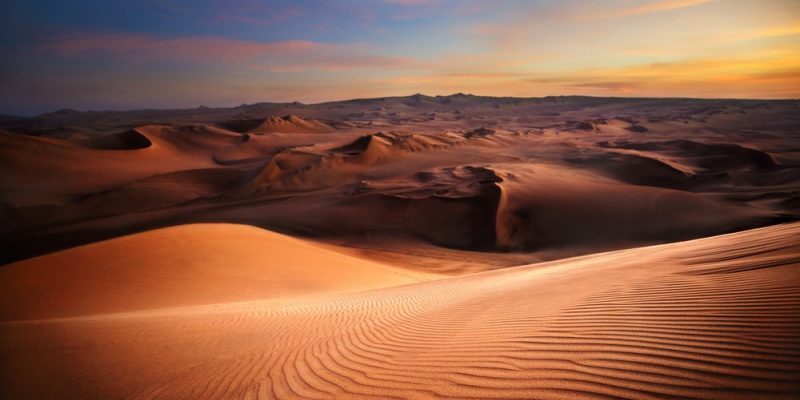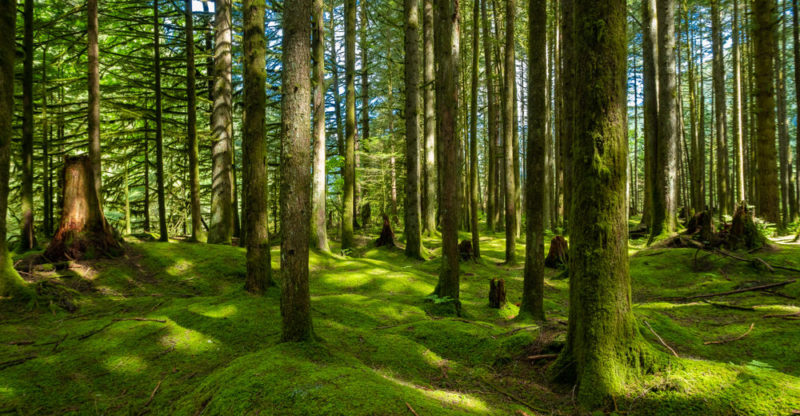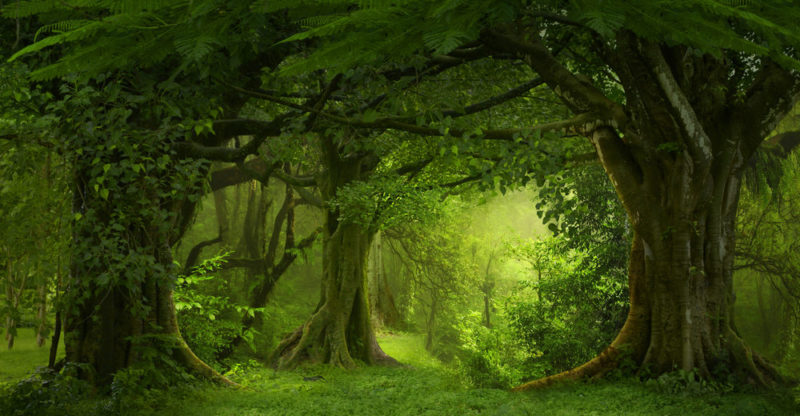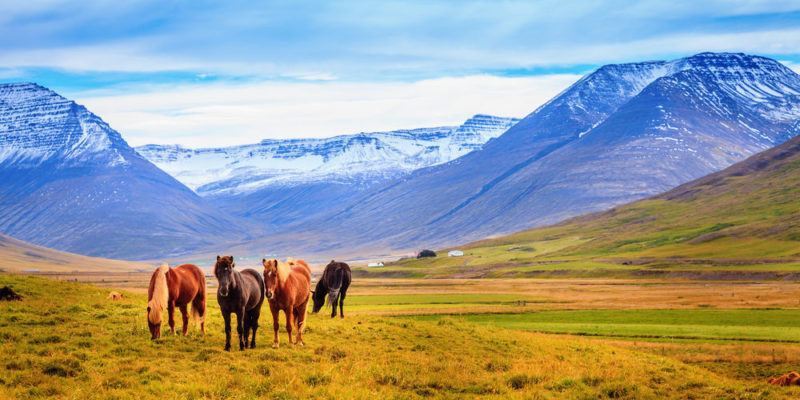We explain what biomes are and how these sets of ecosystems are classified. Also, what are its characteristics, flora, and fauna?
What are biomes?
A biome is a set of interrelated ecosystems that share the same environmental and geographical conditions. Each of the biomes is defined by a specific climate and a certain amount of rainfall that allows the growth and development of the organisms that make up the different ecosystems .
In some cases biomes depend on altitude , but in other cases the same biome can appear at different altitudes.
According to the World Wildlife Fund, there are 33 different types of biomes that can be grouped into ten groups.
Aquatic biomes
Fresh aquatic biomes are rivers , ponds, and lakes , while salty biomes are oceans and seas . In each, the plants and animals adapted to a specific type of water.
They are the oldest biomes since the first life forms originated in them . They include everything from mammals, like whales and dolphins, to the smallest life forms like plankton.
Tundra and desert

The tundra and the desert are the biomes with the least amount of rainfall and therefore have in common a low diversity of species compared to other biomes. Most of the birds in both ecosystems are nomads.
- Tundra . Among its vegetation there are grasses, herbs and mainly mosses and lichens. Its fauna includes caribou, deer, mice, wolves , polar bears, walruses, seals and penguins. The temperatures in winter can reach -50 ° C and summers lastonly one month. The distinctive feature of tundra is that the ground remains frozen and only the top layers thaw. This phenomenon is called permafrost. Is found in:
- Polar desert. Above 60 degrees north latitude, also called the Antarctic tundra.
- Antarctic tundra. Above 50 degrees south latitude, in Ántartida, the subantarctic islands and part of Patagonia.
- Desert . They are the driest areas on the planet , with little or no vegetation . It is the biome with the greatest thermal amplitude since it can reach 40 ° C during the day and -10 ° C at night. The flora of the desert has adapted to the arid climate , such as succulent plants (for example cacti) that accumulate water in their tissues. Wildlife is hidden during the day and active at night and includes snakes , chameleons, scorpions , tarantulas, vultures,desert tortoises , desert iguanas, coyotes, kangaroo rats, and camels.
Meadow
In the prairies, the cold season is a dormant time in which the plants do not grow and the animals decrease their activity. The temperate season is of growth for vegetables and is when the fauna is most active. Its flora consists mainly of grass and shrubs.Among its fauna are weasels, foxes and more than 300 species of birds such as ducks , owls and hummingbirds.
Woods
 They are biomes of great importance for environmental balance since they remove carbon dioxide from the atmosphere and provide oxygen .
They are biomes of great importance for environmental balance since they remove carbon dioxide from the atmosphere and provide oxygen .This is because they are characterized by housing a large number of trees . In addition, a wide biodiversity can be found in them .
The types of forests are:
- Temperate forest. Their temperatures range between 30 ° C and -30 ° C depending on the location and the season. Its flora consists mainly of oak, willow, walnut and fir. Among its fauna are lynxes, pumas, foxes, black bears and wolves.
- Tropical forest. Biome of great biodiversity since in one square kilometer you can find up to 100 different species of trees. Its fauna consists mainly of birds, insects and some mammals .
Taiga
Also known as boreal forest or coniferous forest. Geographically it is found just south of the tundra in the northern hemisphere and in mountainous areas .It is a type of forest formed by conifers such as pines or firs , which are characterized by having small needle-shaped leaves.
Its temperatures are lower than those of other forests, and can reach 40 degrees below zero .
Jungle
 It is a biome with a humid and temperate climate with temperatures between 18 ° C and 30 ° C (with the exception of the mountain jungle , which has lower temperatures). The rains are frequent (they exceed 200 cm per year).
It is a biome with a humid and temperate climate with temperatures between 18 ° C and 30 ° C (with the exception of the mountain jungle , which has lower temperatures). The rains are frequent (they exceed 200 cm per year).The soils are shallow and made up of decomposed organic matter, therefore, although they are very fertile for wild vegetation, they are not so for agriculture.
In the jungle there is vegetation of different heights that are distributed in several layers. Among the great diversity of species are orchids, bromeliads, lianas, shrubs, ceiba, ficus and palm trees.
The fauna of the jungle lives mainly in the trees . There is a wide variety of insects ( ants , butterflies , flies, and stick insects), reptiles (anacondas, turtles, alligators, and boas), and mammals ( monkeys , jaguars, panthers, otters, and bats). Birds live both in trees (like toucans ) and in areas near water surfaces (like ducks).
Chaparral
Also called Mediterranean scrub forest. Its climate is characterized by concentrating rainfall in spring and autumn , with dry summers and mild winters.Given the dryness and high temperatures of summer, fires are frequent but the vegetation is adapted for what it presents a great variety of shrubs that grow quickly. Among its fauna are foxes, goats, squirrels, a great variety of reptiles and rodents.
This biome is distributed mainly around the Mediterranean Sea , but also in some areas with similar climates on the west coast of America and the southern coasts of Africa and Australia.
Steppe
 It is similar to the desert: it has a semi-arid climate but with differences in temperature between summer and winter . Rainfall does not usually reach 500 mm per year, which allows the growth of plants adapted to water scarcity thanks to deep roots.
It is similar to the desert: it has a semi-arid climate but with differences in temperature between summer and winter . Rainfall does not usually reach 500 mm per year, which allows the growth of plants adapted to water scarcity thanks to deep roots.Among its fauna are some mammals such as the horse , the guanaco, the puma and the fox, and birds such as the rhea and the hawk.
Mangrove swamp
It is characterized by the presence of trees that tolerate salt since they are found on sea coasts that are invaded by salty water.This biome includes both terrestrial and aquatic areas , so it has a great biodiversity that includes fish , crustaceans and mollusks in its fauna .
Bedsheet
 It is a biome similar to the prairie but with a tropical climate and a certain number of scattered trees.
It is a biome similar to the prairie but with a tropical climate and a certain number of scattered trees.Just as in the prairie there is a dormant season and a growing season depending on the temperature, in the case of the savanna it depends on the rainfall that differentiates a dry season with little activity and a wet season with rapid growth.
Its fauna includes herds of herbivores and some large carnivores and scavengers.
The above content published at Collaborative Research Group is for informational and educational purposes only and has been developed by referring to reliable sources and recommendations from technology experts. We do not have any contact with official entities nor do we intend to replace the information that they emit.
Anas is an editor of a prestigious publishing company in the United States. She studied Mathematics in Arizona. Anas is also a teacher and one of her long-term goals is to build an institution that offers free education to everyone who are financially not stable. .
Leave a reply
Your email address will not be published. Required fields are marked *Recent post

Sport: What Is It, Types, Risks, Features, Characteristics and Examples

Dogs: Emergence, Features, Characteristics, Feeding and Breeds

Story: Definition, Elements, Structure, Features and Characteristics

